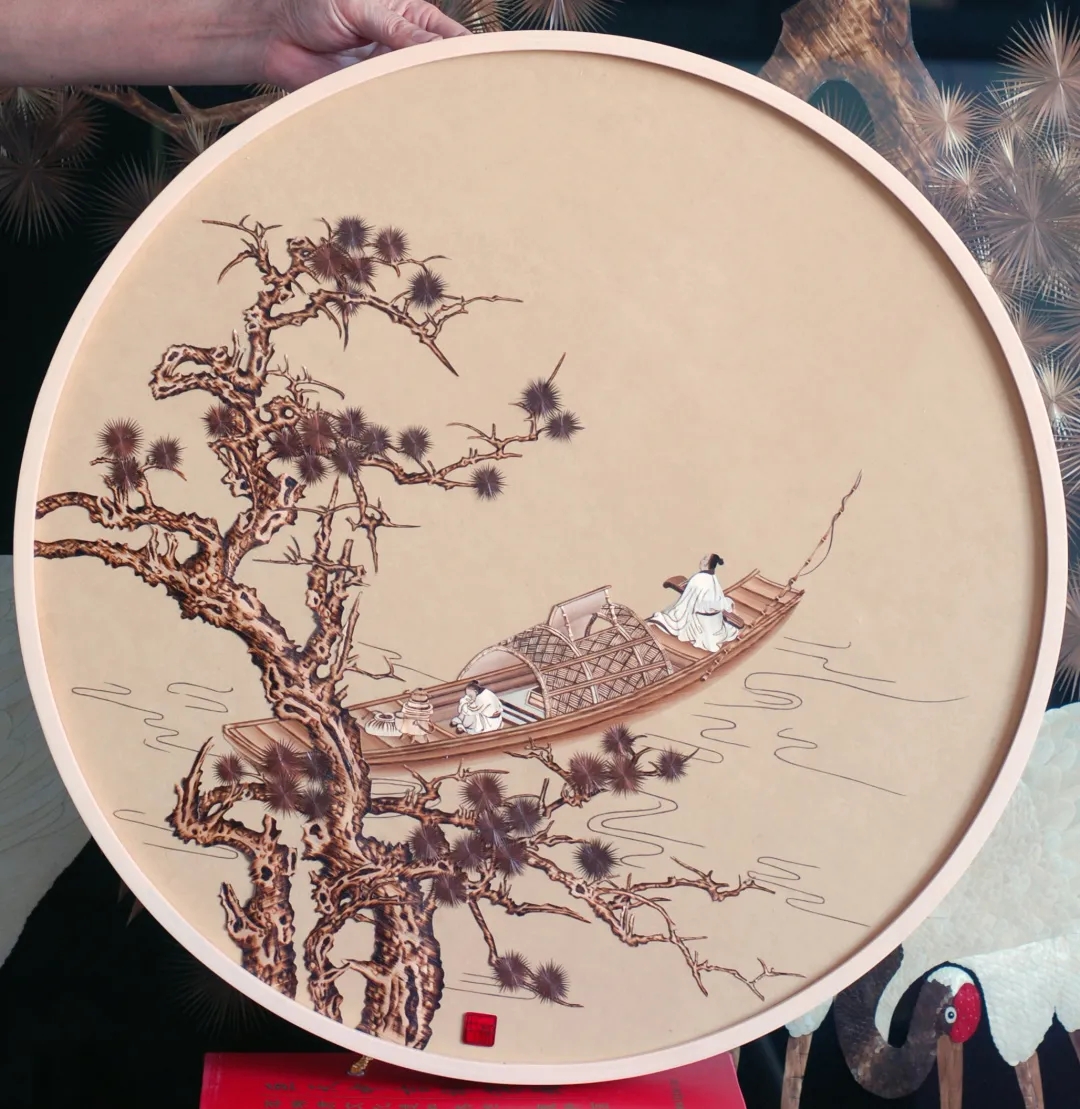Straw paintings shine at HQB Museum
Nie Yaping, from Puyang City in Central China’s Henan Province, is exhibiting her straw paintings at the HQB Museum.
Straw paintings are craft objects made by shaping straw into patterns. It is believed to have a history of more than 1,000 years and has been listed as an intangible cultural heritage in Henan Province.

Straw patchwork art is a folk art that dates back to the Han Dynasty (202 B.C.-A.D. 220). In ancient China, wheat was perceived as sacred; the wheat-straw patchworks were rare and were therefore sent only to the imperial court as tribute. In the Eastern Han Dynasty (25-220), wheat straw paintings were made for worship practices in the imperial court as wheat was considered an auspicious grass used to pray for good fortune. In the Sui Dynasty (581-618), it further evolved as an imperial form of craft.
Making full use of the natural colors and shades of oats, barley, rye, wheat and other grasses, masters of the craft make images of flowers, birds, insects, fish, people and scenery. Today wheat straw patchwork is a decorative art and a popular item for tourists in China.
Dates: Until Dec. 7
Booking: WeChat account “HQB_Museum”
Venue: HQB Museum, 5/F, Modern Window Commercial Plaza, Futian District (福田区现代之窗商业广场五楼华强北博物馆)
Metro: Line 2 or 7 to Huaqiang North Station (华强北站), Exit E2